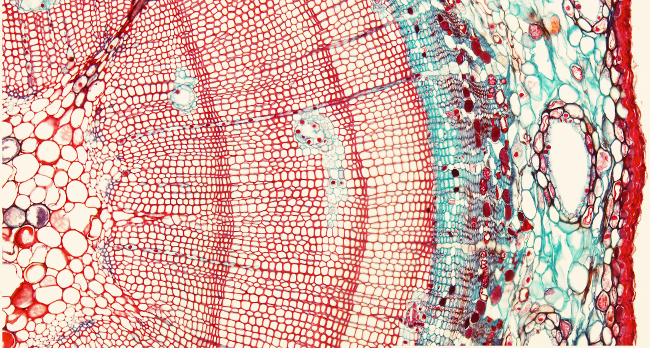
This gymnosperm stem shows a complete secondary growth because the increase in diameter caused by the vascular tissue growing has been followed by the formation of a relatively well-developed periderm. The cortical parenchyma is found below the periderm, with loose cell organization and many intercellular spaces. Large resin channels are a feature of pine stems. Xylem and phloem are easily distinguished because xylem is stained in red and phloem is stained in bluish. Primary phloem is found under the cortical parenchyma, and secondary phloem is under the primary phloem. Secondary phloem is made up of well-organized and tightly piled cells. Deeper, the secondary xylem is quite homogeneous because it lacks tracheae and only contains tracheids and sclerenchyma fibers, both cell types showing similar morphology. Secondary xylem lacks axial parenchyma. There are small resin channels in the secondary xylem. The xylem rays consist of uniseriate layers of parenchyma cells, typical of gymnosperms.The periodicity of the activity of the vascular cambium along the year generates the growth rings. Tracheids and sclerenchyma fibers show thinner cell walls in Spring than in Autumn and the cell size is larger in Spring and smaller in Autumn resulting in the growth rings visualized in transverse sections. In the image above, the pine stem is three years old, and it was cut and fixed in Autumn. The primary xylem (methaxylem) is stained in light blue and is made up of small cell groups that protrude into the pith. Pith is composed of large parenchyma cells, larger than other parenchyma cells in the stem.